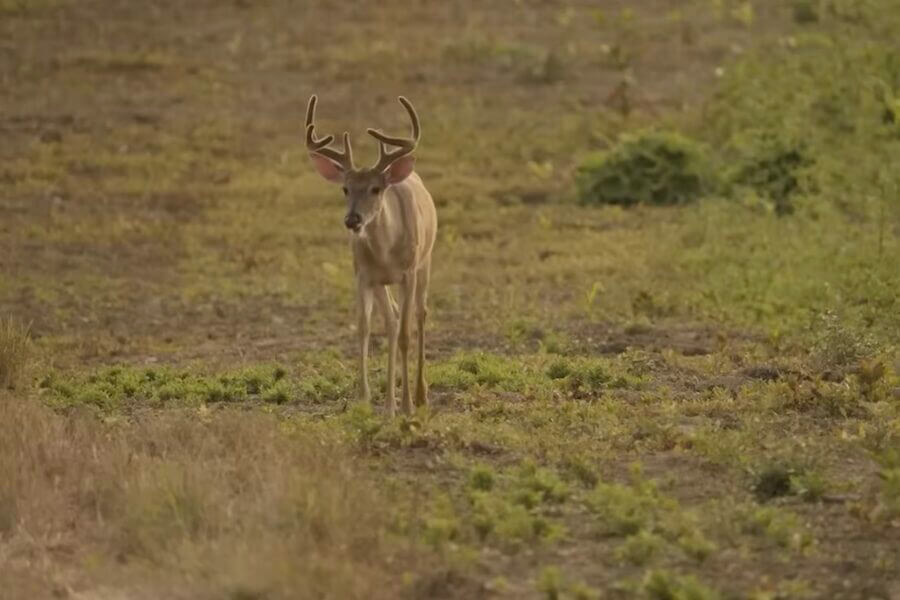The world of whitetails is as fascinating as it is complex, with every behavior giving us a glimpse into their survival skills and social lives.
Recently, a collaboration with the Bearded Buck team in Pennsylvania brought these behaviors to life through stunning footage, narrated by Kip Adams of the National Deer Association.
From the silent signals to the loud cues, whitetails reveal a lot about their world, and there’s more to learn every season.
The Iconic “White Tail” Alert
The whitetail deer isn’t just named for its iconic tail – that white flash serves a purpose. When alarmed, a deer’s tail pops up, revealing the white underside to signal nearby deer of potential danger.
It’s a powerful survival cue, especially in low light, when a flash of white stands out as a rallying beacon for others.
Foot Stomping and Scent Marks
If a deer stomps its foot, something’s got its attention. This isn’t just to make noise; deer have a scent gland in their hooves, called the interdigital gland, and stomping leaves a scent mark for other deer.
This foot stomp communicates, “I saw something unusual here,” adding another layer of their complex warning system.
Tracking Each Other Through Trails and Calls
Deer follow each other using scent trails, and this instinct is especially critical during the breeding season.
Bucks can often be seen “trailing” does, following the exact path they took across fields and forests.
When a buck gets close, he may start to grunt softly, a vocal “hey there” to the doe he’s following.
The Lip Curl, or “Flehmen Response”
One fascinating behavior is the lip curl, which happens when a buck sniffs a doe’s urine. This isn’t about detecting if she’s ready to breed, as commonly believed; it’s a physiological response that keeps bucks physically prepared for the breeding season.
Rubs and Scrapes: A Whitetail’s Calling Card
Bucks communicate their presence and strength by rubbing their antlers on trees and creating scrapes. These scrapes aren’t just random marks; they’re territorial statements.
Bucks also use scrapes to share scent through licking branches, pawing the ground, and even urinating to leave a lasting mark for other deer.
Sparring and Fighting for Dominance
When two bucks meet, they might engage in a gentle spar, where they lock antlers and push against each other.
But sometimes, it escalates to a full-on fight, especially as the breeding season heats up.
Older, dominant bucks often don’t back down, and these encounters can result in serious injury, or even death.
Mother of the Year: Whitetail Does
Newborn fawns are “hiders,” staying motionless and scent-free to avoid predators. The doe visits them just a few times a day, feeding them and removing their waste to minimize scent.
Within a month, they’re active enough to follow her around.
Staying Alert and Safe All Year Long
Deer have adapted over millions of years to be survival experts. Whether feeding or bedding down, they stay alert, relying on their keen senses of sight, sound, and especially smell to avoid predators.
An Invitation to Dive Deeper
For those who want to learn more, the National Deer Association offers resources and ways to get involved. Follow their work on social media or join at DeerAssociation.com for the latest insights into deer biology, behavior, and conservation.
Whitetails are more than just game animals; they’re nature’s masters of survival, and each season unveils more of their captivating world.
